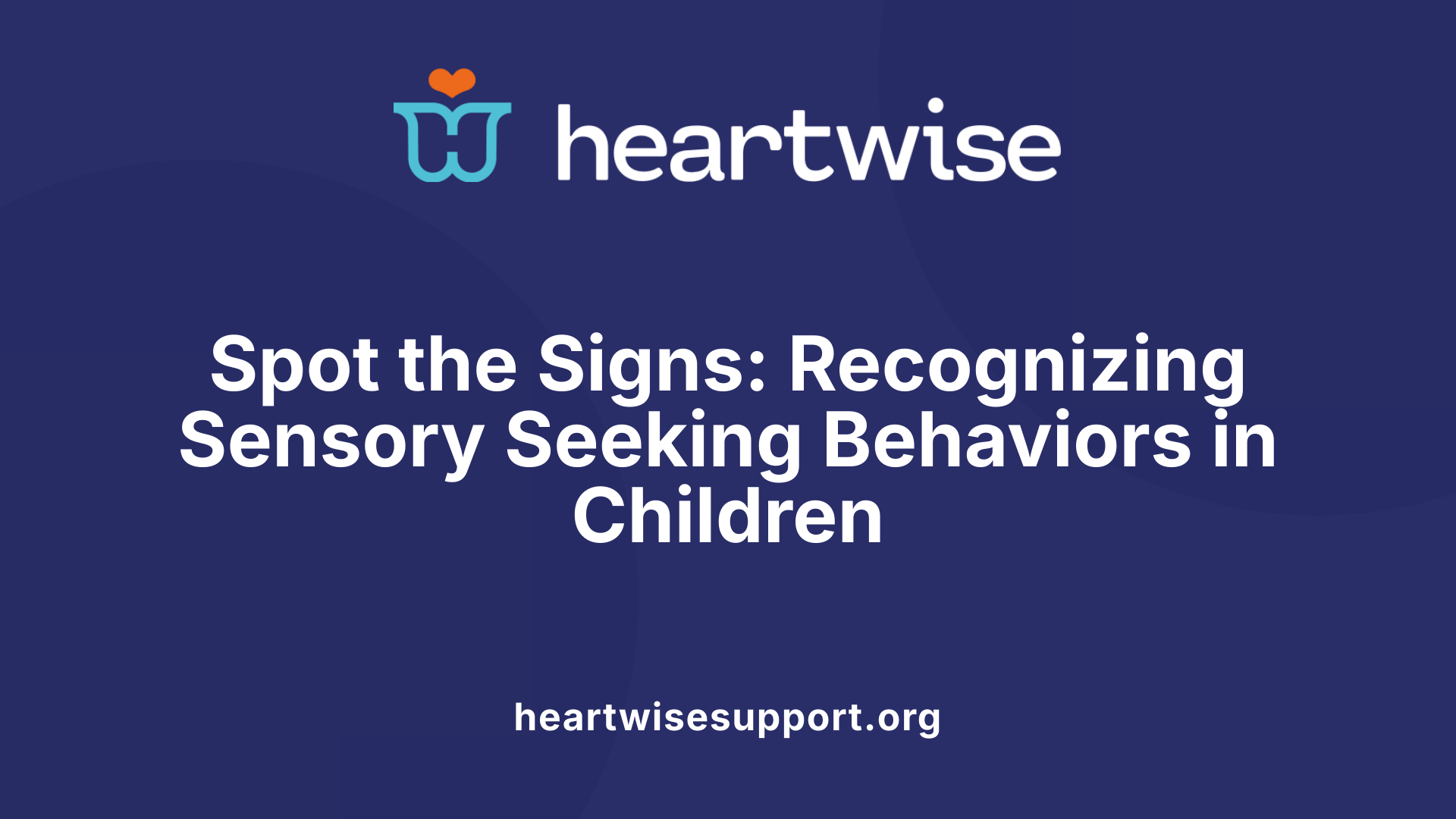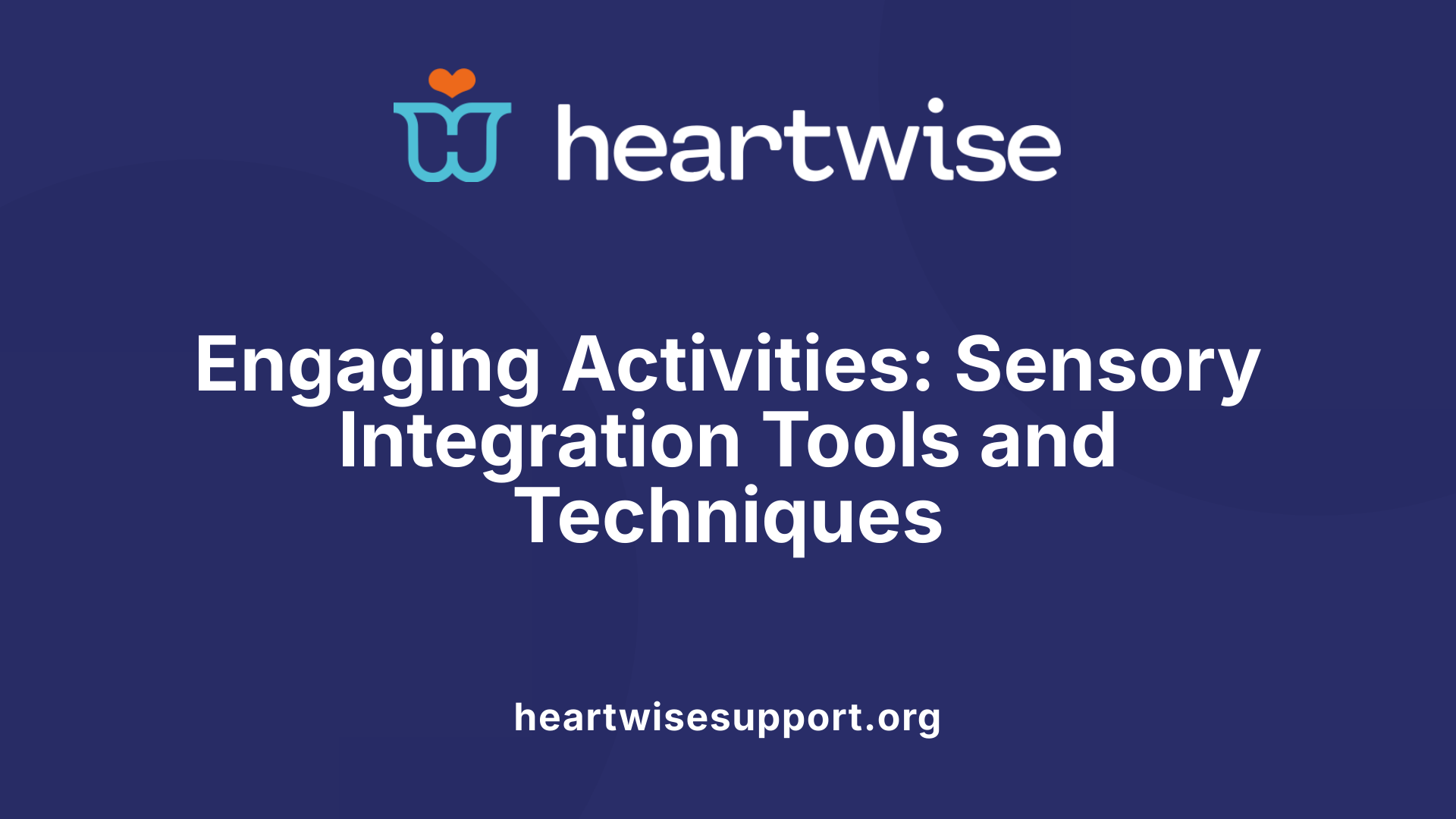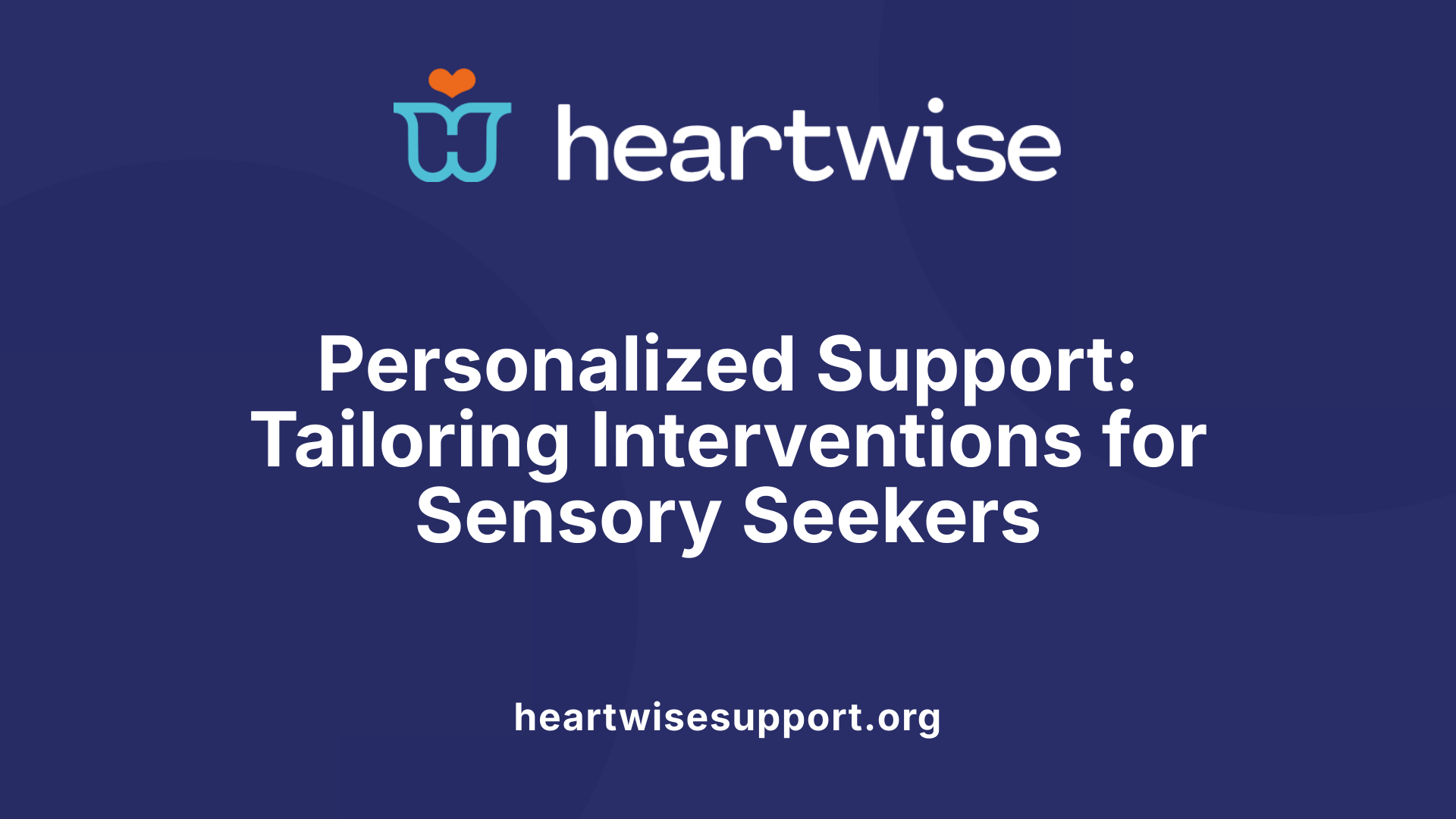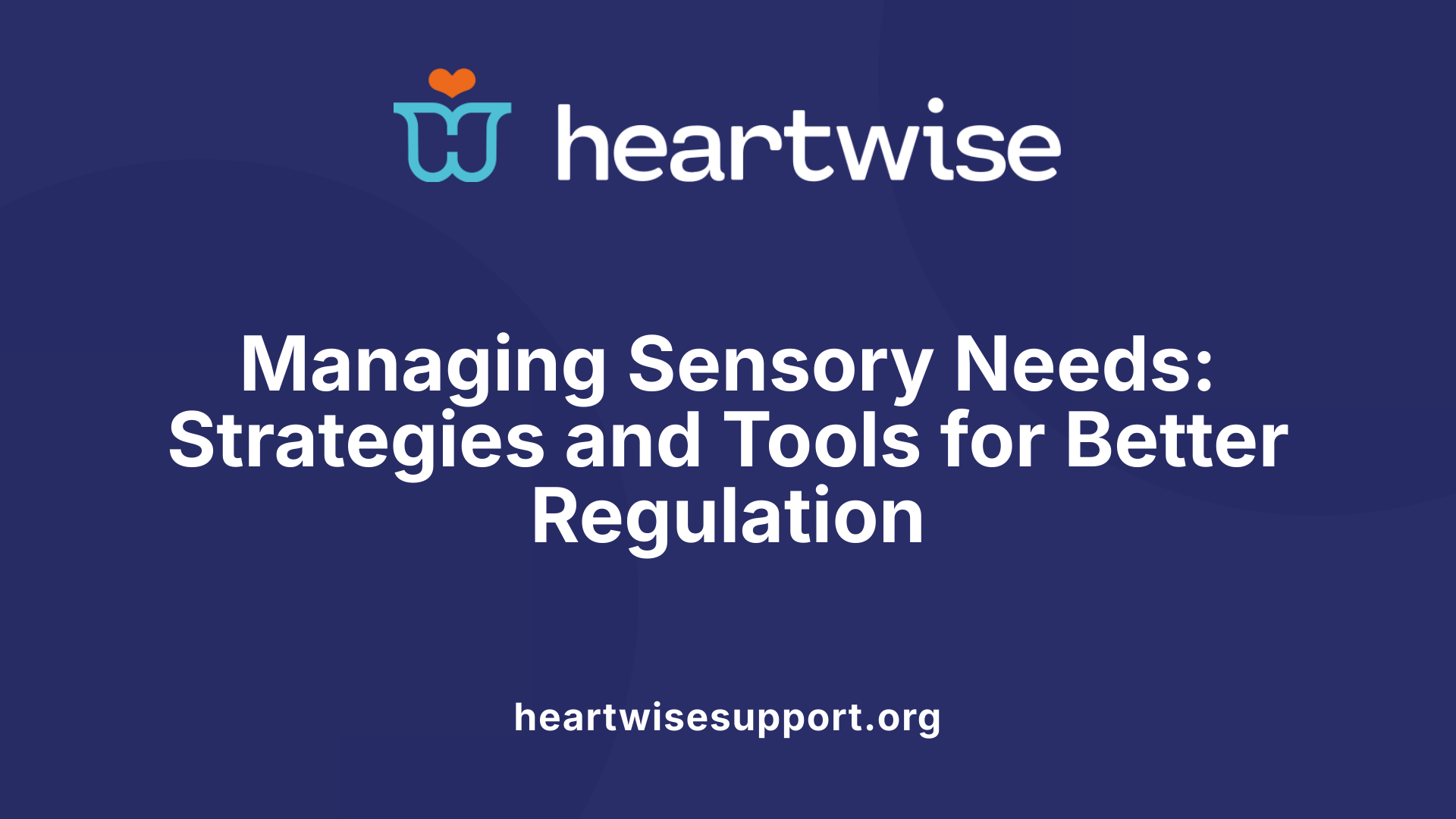Understanding and Addressing Sensory Seeking Behaviors in Children
Sensory seeking behaviors are common in children with sensory processing difficulties, including those with autism spectrum disorder (ASD), ADHD, and other developmental challenges. Recognizing these behaviors early and implementing targeted occupational therapy interventions can significantly improve a child's ability to self-regulate, participate in daily activities, and enhance overall well-being. This article explores the signs of sensory seeking behaviors, the therapeutic activities and techniques used in occupational therapy, and evidence-based approaches to support these children effectively.
Identifying Sensory Seeking Behaviors

What are signs of sensory seeking behaviors to identify?
Signs of sensory seeking behaviors in children often include persistent touching of objects, engaging in repetitive movements like spinning, jumping, or bouncing, and actively seeking loud noises or deep pressure sensations.
Children displaying these behaviors may have difficulty sitting still and frequently move around or bump into objects and people. They might chew on non-food items or show loud vocalizations and rough play as methods for self-regulation.
Additionally, sensory seekers often lack awareness of their body position and personal space, which can lead to risky behaviors such as climbing or crashing into furniture.
Recognizing these signs early helps caregivers and therapists develop tailored strategies. For example, providing structured movement activities or sensory input through tools like therapy balls or swinging can help children achieve regulation and participate more fully in daily activities.
Understanding these behaviors enables the implementation of supportive interventions that promote better focus, safety, and social engagement, vital for your child's overall development.
Activities Commonly Used in Sensory Integration Therapy

What are common activities used in sensory integration therapy?
Sensory integration therapy employs a wide range of activities aimed at providing meaningful sensory input to help children better organize and respond to sensory information. These activities are specifically chosen to stimulate different sensory systems such as tactile, proprioceptive, and vestibular.
Children may engage in swinging on sensory swings or regular playground swings, jumping on trampolines, and crawling through tunnels to activate their vestibular and proprioceptive systems. Textured play materials, sensory bins filled with rice or beans, and finger painting offer tactile stimulation. Activities like animal walks, where children imitate animals’ movements, are popular for developing body awareness and balance.
To promote calming and regulation, therapists frequently incorporate deep pressure massages, joint compressions, and brushing techniques using soft brushes — often part of the Wilbarger protocol. Heavy work activities such as pushing and pulling with therapy balls, carrying weighted objects, or doing ‘heavy work’ exercises help provide proprioceptive feedback.
In addition, tools like weighted vests, blankets, and squeeze machines deliver calming pressure that helps regulate sensory responses. These interventions are tailored to a child's unique sensory profile, often identified during initial evaluations by trained occupational therapists, ensuring activities are both effective and safe.
Specific equipment and tools involved
A typical sensory gym will include specialized equipment like swings, ball pits, foam pits, and textured mats. Common tools and devices used in therapy include:
| Equipment/Tools | Purpose | Sensory System Targeted |
|---|---|---|
| Swings & Bouncing Balls | Vestibular and balance stimulation | Vestibular |
| Weighted Vests & Blankets | Calming deep pressure | Tactile & Proprioception |
| Sensory Bins & Textured Materials | Tactile discrimination | Tactile |
| Trampolines & Climbing Structures | Gross motor and vestibular | Vestibular |
| Therapy Brushes & Joint Compressors | Tactile input & desensitization | Tactile |
| Push & Pull Toys | Proprioception & strength | Proprioception |
These tools enable therapists to deliver controlled, safe, and goal-oriented sensory input.
Tailoring activities to individual sensory profiles
Every child’s sensory preferences and needs are different. So, occupational therapists perform detailed assessments to understand a child's sensory behaviors, sensitivities, and cravings.
Based on this, activities are customized. For example:
- A child with tactile defensiveness might start with mild brushing and textured toys.
- A child seeking vestibular input might spend more time on swings, spinning activities, or movement-based games.
- For proprioceptive needs, activities like carrying heavy objects or jumping are emphasized.
Therapists may also modify the environment, incorporate calming spaces, and suggest home-based activities like sensory play and the use of fidget toys. The goal is not only to increase sensory tolerance but also to improve functional skills like balance, coordination, and emotional regulation.
How Occupational Therapists Customize Interventions for Sensory Seekers

How can occupational therapy help children with sensory seeking behaviors?
Occupational therapy plays a vital role in supporting children who exhibit sensory seeking behaviors. A thorough assessment is the first step, where therapists evaluate how a child seeks sensory input and how it impacts their daily activities. This assessment includes sensory profile analysis, observation in different settings, and sometimes formal tools like the Sensory Processing Measure.
Based on the assessment findings, therapists design personalized intervention plans. A central component of these plans is the development of a sensory diet—an organized schedule of sensory activities tailored to each child's needs. For instance, a child might have scheduled time in a sensory gym engaging in activities like swinging, jumping on trampoline, or crawling through tunnels, which provide proprioceptive and vestibular input.
Environmental modifications also support sensory regulation. Therapists might recommend the use of calming tools such as weighted vests, compression garments, or sensory toys like chewables and squishy toys. Creating sensory-friendly spaces at home or school—such as quiet corners or areas with soft lighting—helps children manage sensory overload.
Furthermore, occupational therapists collaborate closely with parents, teachers, and caregivers. They teach strategies to incorporate sensory activities into everyday routines, ensuring consistency and maximizing benefits. For example, incorporating heavy work activities like pushing or pulling objects, or sensory play involving tactile exploration, can help regulate the child's nervous system.
Research supports that these tailored approaches can reduce sensory craving behaviors, increase self-regulation, and improve social participation. The goal is to help children better process sensory input so they can focus, learn, and interact more comfortably.
Use of environmental modifications and sensory tools
Employing specific tools enhances the effectiveness of interventions. Weighted blankets, therapy balls, and ankle or wrist weights provide calming proprioceptive input. Swings or sensory balls introduce vestibular stimulation, which promotes balance and spatial awareness.
Therapists also advise on creating routines that include sensory activities. For example, a “sensory break” during the school day involving movement or tactile play can prevent sensory overload and meltdowns.
In summary, occupational therapists customize interventions through comprehensive assessment, individualizing sensory diets, and integrating environmental factors and sensory tools. This personalized approach helps children with sensory seeking behaviors manage their sensory needs more effectively, enabling better participation at home and in school.
Effective Strategies and Tools for Managing Sensory Seeking Behaviors

What are effective occupational therapy strategies for managing sensory seeking behaviors?
Occupational therapists employ a variety of targeted strategies to help children who seek excessive sensory input. These approaches are highly individualized, focusing on creating activities that offer appropriate sensory stimulation while promoting regulation and safety.
One common method involves using sensory diets—structured schedules of sensory activities integrated into daily routines. These can include obstacle courses filled with sensory-rich experiences such as crash mats, trampolines, balance beams, and sensory bins. These activities help children satisfy sensory cravings in a controlled and safe manner.
Therapists also incorporate specific tools and equipment, like weighted vests, blanket roll-ups, therapy balls, and squishy toys, to provide calming heavy proprioceptive input. Deep pressure techniques—such as joint compressions and massage—are particularly effective in calming the nervous system.
In addition to physical activities, sensory integration therapy uses movement-based exercises like swinging, animal walks, pushing and pulling activities, and bouncing to support balance, coordination, and sensory processing.
Creating structured routines and visual cues at home and in classrooms helps children anticipate and participate in sensory activities. Environmental modifications, such as quiet sensory zones or spaces with dim lighting, reduce overstimulation and foster self-regulation.
Parental involvement and collaboration with therapists ensure consistency in implementing these strategies. Teaching caregivers how to incorporate sensory activities and tools into daily life enhances the child’s ability to self-regulate and engage appropriately.
Overall, these evidence-based practices aim to diminish maladaptive behaviors, improve focus and emotional control, and foster better participation socially and academically.
Evidence-Based Interventions for Sensory Processing Challenges
What evidence-based interventions are effective in managing sensory seeking behaviors?
Managing sensory seeking behaviors involves a combination of personalized strategies rooted in research-supported practices. Occupational therapists often recommend sensory diets that are individualized to meet a child’s specific preferences and sensory needs. These diets include structured activities like swinging, jumping, animal walks, and obstacle courses that provide sensory-rich experiences.
Utilizing sensory tools can significantly aid regulation. Items such as weighted vests, weighted blankets, sensory toys, and compression clothing help meet tactile and proprioceptive needs, reducing the urge for excessive seeking behavior. The inclusion of deep pressure activities—like blanket roll-ups, crashing into pads, or using weighted therapy balls—also provides calming input.
Environmental modifications are critical. Creating sensory-friendly spaces at home or school with quiet zones, soft lighting, and minimal noise can support better self-regulation. Incorporating sensory activities into daily routines, such as playground play, climbing, or trampoline jumping, helps children organize their sensory system effectively.
Sensory integration techniques, especially activities that involve vestibular and proprioceptive input, are effective in supporting regulation. These include swinging, spinning, bouncing, crawling through tunnels, and animal walks. Such movements activate sensory systems, helping children feel more balanced and less compelled to seek additional input.
Research indicates that these approaches, when tailored to individual needs and implemented consistently, contribute to the reduction of maladaptive seeking behaviors. They support children in achieving better attention, emotional regulation, and functional participation both at school and home.
Overall, an integrated approach involving sensory diets, environmental adjustments, sensory tools, and targeted sensory activities demonstrates the strongest evidence for improving outcomes in children struggling with sensory seeking behaviors.
Techniques and Sensory Modalities in Sensory-Based Interventions

What techniques are used in sensory-based interventions for sensory processing needs?
Sensory-based interventions employ a broad range of activities tailored to help children and individuals better manage their sensory experiences. These techniques span across all sensory modalities, including auditory, visual, tactile, olfactory, and gustatory methods.
For auditory stimulation, therapists might incorporate music therapy, rhythmic sound patterns, or environmental sounds like nature noises to promote calming or alerting effects. Visual stimuli such as watching lava lamps, colored lights, or engaging in visual tracking exercises help enhance visual perception and focus.
Tactile activities are crucial for tactile discrimination and include petting animals, exploring various textures through sensory bins, or using deep pressure techniques like massages, compression garments, or squeezing therapy balls. These activities can reduce tactile defensiveness and improve body awareness.
Proprioceptive and vestibular inputs are provided through activities like swinging, jumping on trampolines, riding scooters, or practicing yoga. Such movements help increase body awareness, improve balance, and regulate arousal levels.
Olfactory stimuli, such as scent jars, scented candles, or essential oils, are used to stimulate the sense of smell and promote calming. Gustatory techniques involve taste exploration with various flavors, chewing gum, or hard candy to support sensory regulation and improve taste tolerance.
These sensory techniques often work synergistically within a structured sensory diet, which schedules activities across the day to maintain optimal regulation and emotional balance.
How do body awareness and sensory modulation methods assist children?
Activities aimed at enhancing body awareness focus on proprioceptive and vestibular inputs, which are essential in developing coordination, balance, and spatial orientation. Sensory modulation methods help children recognize their sensory needs and respond appropriately.
Examples include heavy work activities, such as pushing or pulling objects, animal walks, or blanket roll-ups, which give deep pressure input that can calm the nervous system.
Other strategies involve creating a predictable routine of sensory activities that serve either to calm or alert the child, depending on their needs. Techniques like sensory diets and environmental modifications, such as establishing quiet zones or using weighted blankets, create supportive contexts for sensory regulation.
Use of calming and alerting sensory stimuli
Calming stimuli help children reduce overarousal and include gentle rocking, slow swinging, or applying deep pressure using weighted vests or blankets. These activities promote feelings of safety and relaxation.
In contrast, alerting stimuli are used to increase arousal levels for children who show signs of under-responsiveness or lethargy. Fast-paced movements like jumping, bouncing on therapy balls, or spinning activities help energize the nervous system.
Incorporating these stimuli thoughtfully into daily routines supports children in achieving optimal alertness levels, leading to improved focus, participation, and emotional regulation.
Enhancing Daily Functioning and Quality of Life
Occupational therapy offers a comprehensive and evidenced-based approach to managing sensory seeking behaviors. By assessing individual sensory profiles, developing tailored sensory diets, and incorporating specialized activities, therapists can help children achieve better self-regulation, improved social interactions, and increased participation in daily routines. The collaboration among therapists, parents, and educators ensures that interventions are consistent and effective across environments. Advances in sensory integration research continue to validate the use of multi-sensory approaches like swinging, weighted tools, and movement-based activities, ultimately fostering a supportive environment where sensory seekers can thrive and engage more comfortably in their world.
References
- Sensory Seeking Behaviors & OT Treatment Ideas - The Note Ninjas
- Treating Sensory Processing Issues - Child Mind Institute
- More, Too Much: Understanding Sensory Seeking
- Home Ideas: Sensory Seekers - The OT Toolbox
- Occupational Therapy Interventions for Children and Youth With ...
- How to Tame Your Sensory Seeker - NAPA Center
- Sensory Integration Therapy | Treatment | Services - OT for Kids
- [PDF] Sensory toolkit











